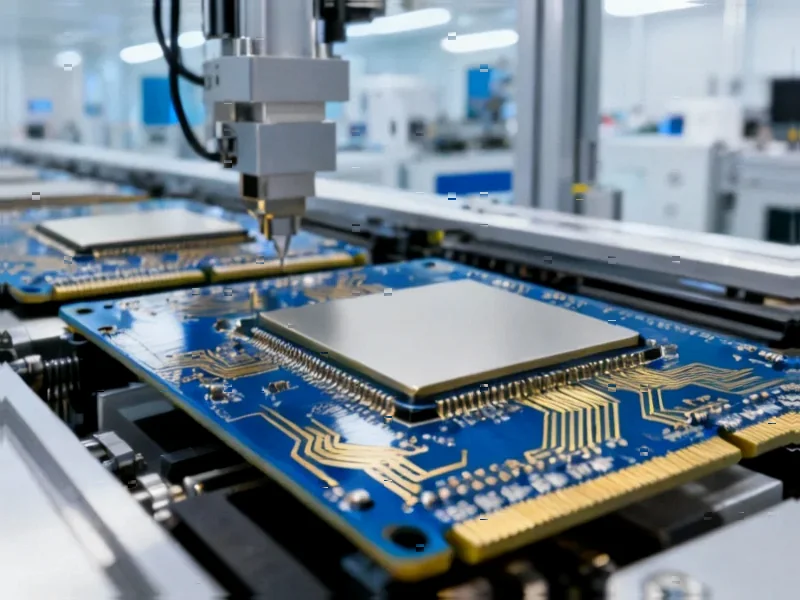According to CRN, AMD just smashed expectations with record third-quarter revenue of $9.2 billion, representing a massive 36% year-over-year jump. CEO Lisa Su reported “sharp” sales increases across both Instinct data center GPUs and EPYC server CPUs, while the client PC business soared 73% to $4 billion. The company beat Wall Street estimates by $500 million on revenue and guided for roughly $9.6 billion next quarter. Most significantly, AMD revealed deepening ties with OpenAI through a multi-year agreement to deploy six gigawatts of Instinct GPUs starting in late 2025, which Su says could drive “over $100 billion in revenue over the next few years.” Despite the blowout numbers, AMD’s stock dropped more than 3.5% in after-hours trading.
The OpenAI Game Changer
Here’s the thing about that OpenAI deal – it’s not just another customer relationship. This is AMD getting a seat at the big kids’ table alongside Nvidia. Six gigawatts of GPU deployment is absolutely massive, and the fact that they’re working together on future hardware and software roadmaps suggests this is way more than just a supply agreement. Basically, OpenAI is betting that AMD can become a viable alternative to Nvidia’s dominance, and they’re putting serious weight behind that bet.
And the timing couldn’t be better. AMD’s MI350 series is already seeing deployments with Oracle and smaller providers, while the MI400 development is “progressing rapidly.” But let’s be real – competing with Nvidia in AI isn’t just about hardware. It’s about the entire ecosystem. That’s why this OpenAI partnership is so crucial – it gives AMD the software and system-level credibility they desperately need.
Data Center On Fire
The numbers here are just insane. Data center revenue hit a record $4.3 billion, up 22% year-over-year. Server CPU revenue reached an “all-time high” with fifth-gen EPYC processors making up nearly half of all EPYC sales. But what’s really interesting is how AI is driving CPU demand too – Su said many customers are planning “substantially larger CPU buildouts” to support AI workloads.
Think about that for a second. Everyone’s so focused on GPUs for AI training, but you still need massive CPU power for everything else. And AMD is cleaning up there too, with more than 1,350 public EPYC cloud instances now available. Enterprise adoption of EPYC cloud instances grew more than three-fold year-over-year. That’s not just growth – that’s complete market transformation.
PC and Gaming Comeback
Remember when everyone thought the PC market was dying? Yeah, not so much. AMD’s client segment grew 73% to $4 billion, with Ryzen processor sales hitting records. Desktop CPU sales reached an “all-time high” and commercial Ryzen PC sell-through grew more than 30%. Gaming revenue absolutely exploded with 181% growth, driven by both console chips and Radeon GPUs.
What’s fascinating is how the commercial segment is driving this growth. Large Fortune 500 companies across healthcare, finance, and manufacturing are adopting AMD at scale. And with the company boosting partner funding by more than 40% this year, they’re clearly not taking their foot off the gas. This isn’t just a cyclical recovery – it feels like a fundamental shift in market share.
The Road Ahead
So where does AMD go from here? The trajectory is pretty clear. They’re guiding for $9.6 billion next quarter, which would be another record. The next-generation “Venice” EPYC processors on 2nm are on track for next year with what Su calls “the strongest customer pull we have seen.” And that Helios rack-scale platform could generate tens of billions annually by 2027.
But here’s the billion-dollar question: can they actually execute on that $100 billion OpenAI opportunity? The stock drop after earnings suggests some skepticism, probably because beating expectations just isn’t enough in this AI-crazed market. Everyone wants to see AMD take meaningful share from Nvidia, and while the numbers are impressive, the real proof will come when those massive OpenAI deployments actually start rolling out next year. For now though? AMD is firing on all cylinders, and Intel must be watching this performance with sweaty palms.




